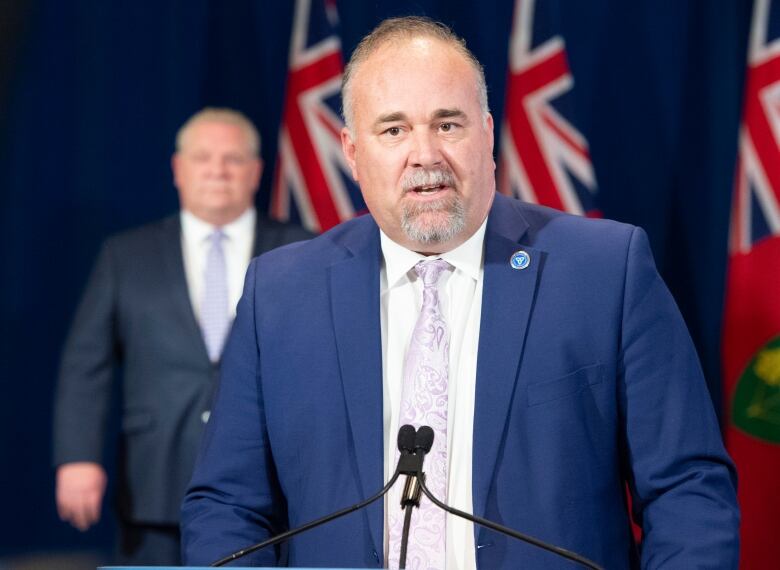Ontario can eliminate natural gas electricity generation by 2050 at $400B cost: IESO
Work should start now to assess the reliability of new technologies to replace natural gas, report says

Ontario can fully eliminate natural gas generation in its electricity system by 2050, starting with a moratorium in 2027, but it will require about $400 billion in capital spending and new, large-scale nuclear plants, a report said Thursday.
The Independent Electricity System Operator released a series of publications Thursday, including a study on pathways to decarbonizing the grid, which it said will be a complex task as electricity demand is projected to rise over the same time period.
It said work should start now to assess the reliability of new and relatively untested technologies and fuels to replace natural gas and to set up large, new generation sources such as nuclear plants and hydroelectric facilities.
"Ontario will need all of the resources available to it to simultaneously expand and decarbonize," the report said. "While many options are already available and understood wind, solar, hydroelectric and large nuclear others options such as [small modular nuclear reactors]and low-carbon fuels will require support, and their availability is not guaranteed."
Energy Minister Todd Smith said in a statement that he will launch a consultation in the new year on next steps from the report, including the potential development of major nuclear, hydroelectric and transmission projects.
An interim report it released in the fall said that Ontario would need more natural gas in the short term, to provide flexibility and fill a supply gap as electricity demand grows and nuclear plants are refurbished or retire.
But beyond a new 1,500 megawatts of natural gas generation the energy minister directed the IESO to procure, the system operator said a moratorium is feasible and the province can then start a phase out.
The report identifies a number of risks, including that large electricity infrastructure can take 10 to 15 years to build. As well, a potential six-fold increase in the workforce to build those types of projects may be required, meaningful consultation will be necessary with Indigenous communities, and small modular reactors and low-carbon fuels such as hydrogen while important to decarbonization are still in development.

"If low-carbon fuels do not materialize, replacing natural gas will be an even more complex task, requiring more research and analysis into understanding how generation, demand, transmission and storage can be combined to replace gas," the report said.
"It may be possible to overcome all of these barriers, but it will require concerted effort by government and innovators."
A 'politically sensitive issue'
The report also highlights the politically sensitive issue of the cost to ratepayers. The former Liberal government faced widespread anger over high hydro bills, driven up in part by long-term contracts at above-market rates with clean power producers secured in order to spur a green energy transition.
If consumer costs become too high, it could jeopardize the plan to decarbonize, the IESO said. Chuck Farmer, the vice-president of planning, conservation and resource adequacy, said the pacing of adding new, non-emitting electricity generation is very important.
"If we build, but the demand maybe emerges a little bit later, then we would have a lot of resources that we have to pay for and that will increase costs, and that may derail the transition from a customer point of view," he said.
"Rapidly rising electricity costs could discourage electrification, stifle economic growth or hurt consumers with low incomes," the report added.
The IESO said decarbonizing the electricity system by 2050 would require between $375 and $425 billion in capital costs over 23 years, resulting in annual operating costs of about $60 billion by 2050 three times the current costs.
There is no precise plan for exactly how much of each generation source would be needed to replace natural gas and meet rising electricity demand, but Farmer said it will involve a "significant" amount of nuclear, both large plants and small modular reactors.












_(720p).jpg)


 OFFICIAL HD MUSIC VIDEO.jpg)
.jpg)



























































































